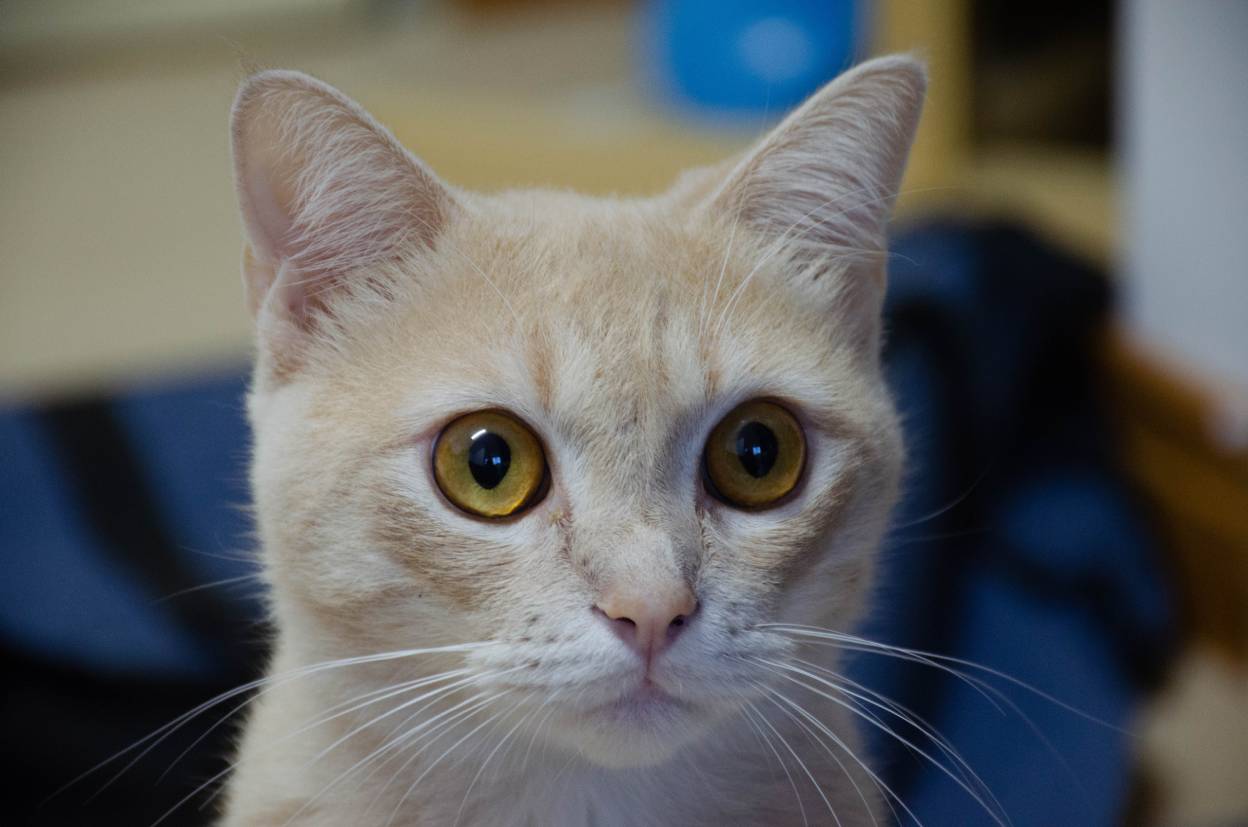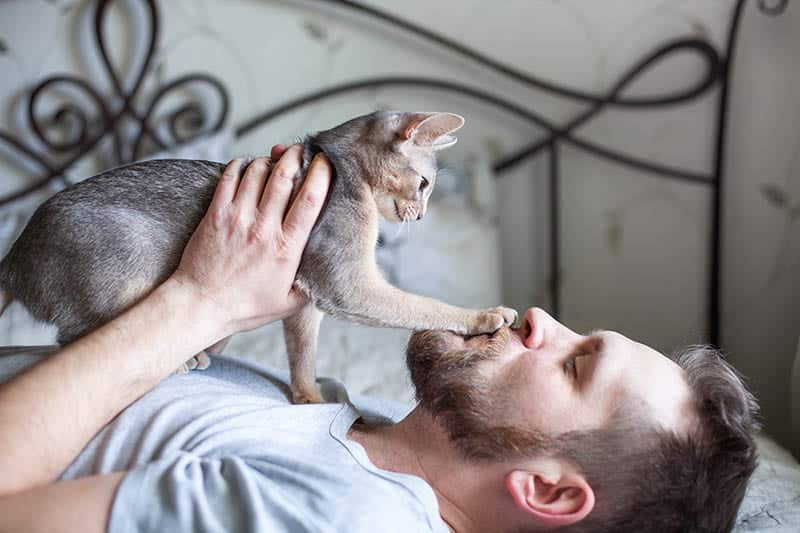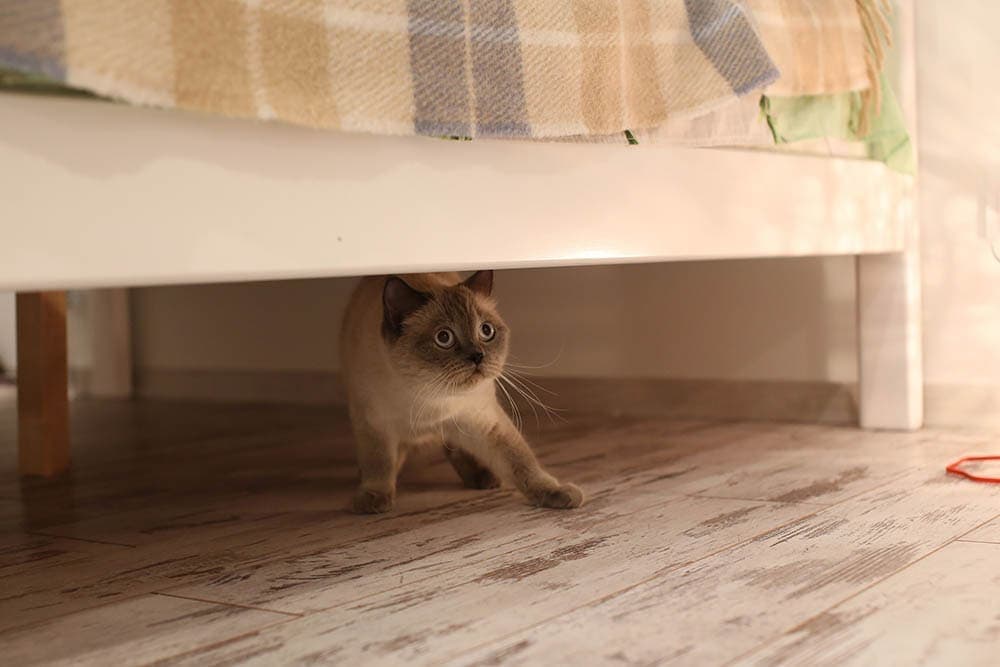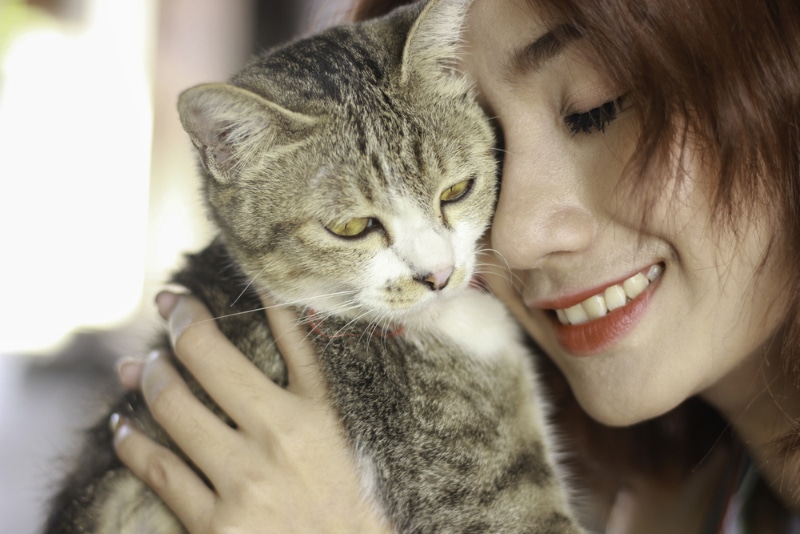Like humans, cats are thought to possess the ability to sense energy shifts in the people they’re close to. Of course, your kitty will act differently when you’re angry when you’re yelling or throwing things. It is not hard to tell that something is off when you’re clearly showing signs of strong emotions.
But have you wondered if your cat can also pick up on silent feelings, like when you’re internally stressing out about bills coming due or a particularly challenging project at work? As a short answer, yes, anecdotal evidence and science have demonstrated that your kitty can sense negative energy to some extent.
Keep reading to learn more about cats and their ability to sense energy.
Can Cats Sense Bad Energy?
Anecdotally, many people claim that cats are instinctually aware of negative energy, so much so that some believe they may even start absorbing it. Research has found that cats can understand some human emotions and respond to them accordingly 1. For instance, they seem to spend more time with depressed individuals. This indicates that at some level, they might be able to perceive a shift in our mood or general “energy”.
Cats may not be able to understand our words, but they’re highly intuitive and gifted at reading our emotions. Cats are relatively adept at understanding the faces you make when you’re feeling emotions like happiness, anxiety, or anger.

How Can Cats Sense Energy?
The exact mechanism by which cats sense energy in humans is unclear. After all, we don’t exactly think about why we feel a certain way when we first observe someone; rather, it seems to be something we do without much thought. Likewise, we’re able to sense when something is off with someone with whom we’ve spent considerable time in the past. With pet cats spending so much time with us, it’s likely that they’ve adapted to picking up on our cues in the same way.
Another interesting aspect to consider is that our cats have a sense of smell far superior to ours, and they may be able to smell changes in our demeanor through the various scents we naturally emit. Take, for example, a cat named Oscar 2, who lived in a nursing and rehabilitation center in Rhode Island. Oscar was able to predict the deaths of several patients simply by lying on the patient’s bed when it was their time to pass. It’s unlikely that he determined that death was near due to emotions, but instead, the chemicals and hormones that the dying bodies release.
Strong emotions may lead to changes in your hormones, thus changing the scent you’re giving off. Cats and dogs are highly receptive to scents which is likely how they sense energy and mood shifts.
How Do Cats React to Different Emotions?
Anecdotal evidence suggests that cats respond differently to different scents that we may emit as our mood shifts.
For example, if you’ve ever felt down in the dumps, you may have noticed that your cat is extra affectionate or snuggly. It’s thought that cats can sniff out the hormones associated with depression 3.
When you’re afraid, your body may release adrenaline to initiate the flight or fight response. If you’re interacting with your cat while you’re scared, they may smell your fear and respond to the subtle changes in your demeanor and heart rate.
If you or someone you know has ever been pregnant, you may have noticed your cat’s behavior changes in response to the pregnancy. For example, they could become more affectionate, curious, or anxious. Your kitty may have even picked up on the baby before you even knew you were pregnant. When a woman becomes pregnant, the body produces higher levels of certain hormones. These hormonal shifts subtly change the way the body smells. Though we can’t smell these changes, a cat’s sensitive olfactory system possibly can, which might explain the changes in their behavior towards pregnant women.

What Do Cats Do When They Sense Bad Energy?
There are several responses your cat may have to bad energy.
First, they may run and hide when they pick up on negative energy from someone. This safe spot gives them protection and maybe a hardwired response in cats as a survival mechanism from when they lived in the wild.
Other cats may respond to bad energy through aggressiveness, especially if feeling threatened. For example, they may swat at you or start growling or hissing.
They might also decide to ignore you. Cats can choose who they want to be around, and if your energy gives them bad vibes, they might walk away from you to keep their peace.

Final Thoughts
Your cat can likely pick up on your moods and bad energy in the house. Cats are sensitive to their environment, and subtle changes can throw off the balanced equilibrium they’ve come to know and expect. So, the next time you are starting to see red, it might be beneficial to take a moment to think of your kitty and how your outburst will affect them.
Featured Image Credit: CartoonMini, Shutterstock











